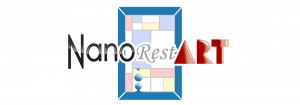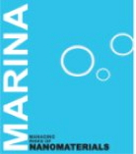Open position on environmental modelling at the ECRA Unit
The Environmental Chemistry and Environmental Risk Assessment (ECRA) Unit (http://www.ecraunit.com/) at the Department of Informatics, Environmental Science and Statistics of the University Ca’ Foscari of Venice is looking for a motivated and talented candidate with a degree in Environmental Science, Environmental Engineering or related subjects with experience on research activities and/or consultancy on the following topics, applied to both traditional and emerging pollutants:
- Emissions inventories
- Fate and transport models
- Bioaccumulation models
The PhD title is considered an asset to the position.
The contract will cover a period of 12 months, with possible annual extensions up to 36 months, starting in December 2019/January 2020.
The candidate will work within two research projects:
- a national project, Venezia2021, focused on anthropogenic impacts on Venice lagoon ecosystems;
- an EU project (funded by H2020 programme), focused on the impacts of ship emission control techniques on aquatic ecosystems of the Venice lagoon and Adriatic Sea coastal areas.
The fellowship will cover the following tasks:
- Assessment of emissions to Venice lagoon of different types of emerging pollutants (pharmaceuticals, plant protection products, industrial chemicals, cosmetics, etc.), selected according to the outcomes of previous and on-going monitoring campaigns;
- Development and application of fate&transport models for estimating concentrations of target chemicals (priority or emerging substances) in environmental compartments in the Lagoon of Venice and Adriatic Sea coastal areas;
- Application of bioaccumulation models to organic and inorganic pollutants considering local aquatic food webs;
- Writing of project reports and scientific papers;
- Contribution to the communication and capitalisation efforts of the projects, participation to national and international project meetings and workshops;
- Involvement in the preparation of new project proposals will also be encouraged, according to personal research interests.
Candidates skills:
- Good knowledge of English, the knowledge of Italian is considered an advantage
- Experience in environmental modelling, including programming language(s)
- Good ability to work in interdisciplinary teams (together with experts in analytical chemistry, risk assessment, ecotoxicology, etc.)
- Ability to work independently and good planning skills
For more information on the position and selection procedure please contact Dr. Elena Semenzin (semenzin@unive.it; 041-2348914), Dept. of Environmental Sciences, Informatics and Statistics (DAIS), University Ca’ Foscari of Venice.
RiskGONE – science-based RIsk GOvernance of Nano-tEchnology
RiskGONE is a H2020 project involving 22 international partners with the aim to provide a state-of-the-art risk governance framework and firm science-based interdisciplinary risk management procedures for nanotechnology, based on a clear understanding of risks, risk management practices, and perception of risk by all stakeholders. The project partners aim to succeed in this task by supporting the standardisation and validation process for Engineered Nanomaterials (ENMs) by evaluating, optimising and prevalidating the SOPs (Standard Operating Procedures) and ISO test guidelines, as well as integrating them into a framework for risk governance and a related Decision Support Tool. Ultimately, a transparent and self-sustained Risk Governance Council will be established within the project, which will act as a science-based governance body for ENMs safety.
Link https://riskgone.eu/
Ricerca candidato per analisi di rischio ecologico – Universita Ca’ Foscari Venezia
Il gruppo di ricerca “Environmental Chemisty and Environmental Risk Assessment“ (http://www.ecraunit.com/) del Dipartimento DAIS, Università Ca’ Foscari Venezia, cerca un candidato motivato in possesso di Laurea Specialistica in Scienze Ambientali o discipline affini, preferibilmente con esperienza documentabile di attività di ricerca e/o consulenza svolta in Italia e/o all’estero sui seguenti argomenti:
- approcci e procedure sviluppate a livello internazionale per l’analisi di rischio ecologico applicata ad ambienti acquatici e/o terrestri;
- gestione, valutazione e integrazione di dati chimici, biologici, ecotossicologici.
Il dottorato di ricerca è considerato titolo preferenziale per l’accesso alla posizione.
Offriamo una posizione della durata di 12 mesi (rinnovabile), nell’ambito di progetti di ricerca già approvati che inizieranno entro dicembre 2018.
Il lavoro prevede lo sviluppo di procedure per la valutazione del rischio associato alla presenza di contaminanti chimici in ecosistemi acquatici, basate su un approccio di tipo Weight of Evidence che permetta di integrare in maniera ponderata i risultati di analisi chimiche sulle matrici acqua e sedimento, test ecotossicologici su diverse tipologie di organismi, dati ecologici, etc. Le attività includono l’applicazione ad uno o più casi studio in relazione ai progetti di ricerca attivi.
La posizione offerta prevede:
- review e valutazione critica di approcci e procedure per l’analisi di rischio ecologico per ambienti acquatici applicate a livello nazionale e internazionale;
- attività desk di sviluppo metodologico e applicazione ai casi studio selezionati;
- gestione dei dati chimici, biologici, ecotossicologici che saranno forniti dai partner di progetto;
- stesura di report di progetto;
- scrittura di articoli scientifici.
Il candidato deve:
- avere una buona conoscenza delle lingue inglese e italiana;
- avere buone capacità di lavoro in team interdisciplinari;
- saper pianificare e gestire in maniera autonoma il proprio lavoro;
- avere buona capacità di comunicazione scritta e orale.
Per ulteriori informazioni sulla posizione offerta e sulle procedure di selezione, contattare la Dott.ssa Elena Semenzin (semenzin@unive.it; 0412348914).
PhD fellowship at University Ca’ Foscari Venice (Italy), supported by BIORIMA project
We are looking for a PhD candidate who will be working on risk assessment and management of nanobiomaterials used in medical devices and advanced therapy medicinal products. The PhD fellowship is supported by BIORIMA project (www.biorima.eu), funded by H2020 EU Programme, and is expected to start in September 2018 for three years.
The PhD project will be focused on the development of an integrated framework for human health risk assessment and risk management, encompassing the whole life cycle of nanobiomaterials and considering different targets (workers involved in production processes, patients, healthcare professionals). Application of the developed framework to different nanobiomaterials – such as metal/metal oxides, ceramics, organics and hybrids – produced by industrial and/or research project partners is envisaged. The PhD project will require collaboration with partners from different EU Countries and will be developed in a multidisciplinary, international academic environment.
The candidate shall have a Master Degree in Environmental Sciences, Environmental Chemistry, Environmental Engineering or in a closely related discipline. Previous experience (e.g., Master thesis or scientific publications) in human health risk assessment of chemicals and/or nanomaterials will be positively evaluated. Experience in lab activities (e.g. analytical chemistry, characterization of materials) is not required but is an advantage. A successful candidate should be practiced in spoken and written English, should have good organisational and communication skills, and should be interested in interdisciplinary work.
Information about the open call for the Doctoral Programme in Environmental Sciences at the University Ca’ Foscari Venice can be found here: http://www.unive.it/pag/25684/
Applicants must submit a concise research project proposal, for further information about the topic of this fellowship please contact:
Elisa Giubilato
Dept. of Environmental Sciences, Informatics and Statistics
University Ca’ Foscari Venice
E-mail: giubilato@unive.it
Phone: +39-0412348671
SRA Policy Forum: Risk Governance for Key Enabling Technologies
SUN is co-organizing the SRA Policy Forum: Risk Governance for Key Enabling Technologies to be held on 1- 3 March in Venice, Italy. Find more details here.

From nano risk management to innovation governance: Developing state of the art, reliable and trustable, governance models and tools for nanomaterials
SUN is co-organizing the SUN-CaLIBRAte Stakeholders workshop: From nano risk management to innovation governance: Developing state of the art, reliable and trustable, governance models and tools for nanomaterials to be held on 2-3 March 2017 in Venice, Italy. Find more details here.
New Tools and Approaches for Nanomaterial Safety Assessment
SUN is co-organizing New Tools and Approaches for Nanomaterial Safety Assessment: A joint conference organized by NANOSOLUTIONS, SUN, NanoMILE, GUIDEnano and eNanoMapper to be held on 7 – 9 February 2017 in Malaga, Spain. Find more details here.
Environmental Nanosafety
Research activities span from characterization of engineered nanomaterials in products and environmental media along life cycle stages to human health as well as ecological risk assessment in order to support sustainable manufacturing and use of nanotechnologies. The aim is to improve our understanding of release, fate and transport of engineered nanomaterials and related exposure scenarios as well as toxicological effects to human health as well as the environment, and to develop and apply adequate methodologies for a sound risk assessment.
Non-conventional ways of addressing potential risks (e.g., Weight of Evidence approaches, Expert Elicitation, Multi Criteria Decision Analysis techniques) are adopted, thus taking into account the deep uncertainties that currently pervade every step of the risk assessment procedure, especially when applied to nanomaterials, and implemented into user-friendly software-based decision support systems.
Climate Change Risk Assessment and Management
The primary aim of the research unit is to develop and apply methodologies for the analysis of environmental impacts and risks related to climate change and natural hazards. Interdisciplinary approaches and tools (e.g. risk and vulnerability assessment, multi criteria decision analysis, spatial indicators, decision support systems, ecological risk models) are employed for the assessment of impacts associated to one or more environmental stressors at different spatial and temporal scales (e.g. climate variability and change, chemicals, land use changes). Particular emphasis is given to the development of Regional Risk Assessment (RRA) and Multi-Risk Assessment (MRA) methodologies able to consider the complex relations between multiple hazards and exposed receptors on different natural and human systems. Research activities are also devoted to the assessment of the consequences of climate change on environmental fate and transport of chemicals and on the evaluation of related risks for ecological and human systems.
All the research products are implemented in GIS-based Decision Support Systems (DSSs) that guide stakeholders and decision makers in the spatial analysis of the potential consequences associated to climate change and in the definition of suitable risk management and adaptation options.
The interdisciplinary work is carried out in collaboratio with research groups from the Euro-Mediterranean Centre on Climate Change (CMCC, www.cmcc.it) and the Venice Centre for Climate Studies (VICCS, http://www.unive.it/nqcontent.cfm?a_id=172748).
Environmental Chemical Contamination
The research activities focus on the development and application of methodologies and tools for the assessment of risks and impacts of chemical substances on ecosystems and human health, in order to support the sustainable management of contaminated areas and natural resources. Our research activities include:
- development and application of methodologies and tools for ecological and human exposure and risk assessment for contaminated areas (soil, freshwater and groundwater);
- development and application of regional risk assessment procedures for the prioritisation/optimisation of sustainable solutions for the rehabilitation of contaminated sites and brownfield sites;
- sustainability assessment of remediation technologies;
- development of Decision Support Systems (DSSs) to support and improve the decision-making process in contaminated sites assessment and management;
- integration of environmental and socio-economic information by developing dedicated Multi Criteria Decision Analysis (MCDA) methodologies to support end-users and decision-makers in the decision- making process;
- provision of regulatory and methodological support in the implementation of the new European Regulations such as REACH (Registration, Evaluation and Authorisation of Chemicals) and CLP (Classification, Labelling and Packaging of substances and mixture).
NANORESTART – NANOmaterials for the REStoration of works of ART
EU H2020 project started on 1st June 2015 and lasting 36 months.
Currently there is a lack of methodologies for the conservation of modern and contemporary artworks, many of which will not be accessible in very short time due to extremely fast degradation processes. The challenge of NANORESTART (NANOmaterials for the REStoration of works of ART) will be to address this issue within a new framework with respect to the state of the art of conservation science. NANORESTART is devoted to the development of nanomaterials to ensure long term protection and security of modern/contemporary cultural heritage, taking into account environmental and human risks, feasibility and materials costs. The market for conservation of this heritage is estimated at some €5 billion per year, and could increase by a significant factor in the next years due to the wider use of nanomaterials. The new tools and materials developed will represent a breakthrough in cultural heritage and conservation science and will focus on: (i) tools for controlled cleaning, such as highly-retentive gels for the confinement of enzymes and nanostructured fluids based on green surfactants; (ii) the strengthening and protection of surfaces by using nanocontainers, nanoparticles and supramolecular systems/assemblies; (iii) nanostructured substrates and sensors for enhanced molecules detection; (iv) evaluation of the environmental impact and the development of security measures for long lasting conservation of cultural heritage. Within the project the industrial scalability of the developed materials will be demonstrated.
NANORESTART gathers centres of excellence in the field of synthesis and characterization of nanomaterials, world leading chemical Industries and SMEs operating in R&D, and International and European centres for conservation, education and museums. Such centres will assess the new materials on modern/contemporary artefacts in urgent need of conservation, and disseminate the knowledge and the new nanomaterials among conservators on a worldwide perspective.
Link http://www.nanorestart.eu/
NanoFASE – Nanomaterial FAte and Speciation in the Environment
EU H2020 project started on 1st September 2015 and lasting 48 months.
NanoFASE will deliver an integrated Exposure Assessment Framework, including methods, parameter values, model and guidance that will allow Industry to assess the full diversity of industrial nano-enabled products to a standard acceptable in regulatory registrations.
Methods to assess how use phases, waste streams and environmental compartments (air, soil, water biota) act as “reactors” in modifying and transporting ENMs will be developed and used to derive parameter values. Our nanospecific models will be integrated with the existing multi-media fate model SimpleBox4Nano for use in EUSES and also develop into a flexible multi-media model for risk assessment at different scales and complexities. Information on release form, transformation and transport processes for product relevant ENMs will allow grouping into Functional Fate Groups according to their “most probable” fate pathways as a contribution to safe-by-design based on fate.
Methodology: Inventories of material release forms along the product value chain are established. We then study how released ENMs transform from initial reactive states to modified forms with lower energy states in which nanospecific properties may be lost. Transport studies assess material fluxes within/between compartments. The experimental work underpins models describing ENM transformation and transport. Open access is provided to the models suitable for incorporation into existing exposure assessment tools (e.g. SimpleBox4Nano) and for more detailed assessment. Framework completeness is validated by case studies.
Impact: Identified links between ENM material properties and fate outcome (e.g. safe-by-design).
Improved representation of nanospecific processes in existing key fate and exposure assessment tools (e.g. SimpleBox4Nano in EUSES). Contribution to standardization. GIS framework to support predictive assessment, catchment and point source management of ENM releases.
SUN – Sustainable Nanotechnologies
EU FP7 project started on 1st October 2013 and lasting 42 months.
SUN (Sustainable Nanotechnologies) is the first project addressing the entire lifecycle of nanotechnologiesto ensure holistic nanosafety evaluation and incorporate the results into tools and guidelines for sustainable manufacturing, easily accessible by industries, regulators and other stakeholders. The project will incorporate scientific findings from over 30 European projects, national and international research programmes and transatlantic co-operations to develop (i) methods and tools to predict nanomaterials exposure and effects on humans and ecosystems, (ii) implementable processes to reduce hazard and exposure to nanomaterials in different lifecycle stages, (iii) innovative technological solutions for risk management in industrial settings, and (iv) guidance on best practices for securing both nano-manufacturing processes and nanomaterials ultimate fate, including development of approaches for safe disposal and recycling. In summary, SUN stands for an integrated approach for the long-term sustainability of nanotechnologies through the development of safe processes for production, use and end-of-life processing of nanomaterials and products, as well as methods reducing both adverse effects and exposure to acceptable levels.
MARINA – Managing Risks for Nanomaterials
EU FP7 project started on 1st November 2011 and lasting 48 months.
While there are standard procedures for product life cycle analysis, exposure, hazard, and risk assessment for traditional chemicals, is not yet clear how these procedures need to be modified to address all the novel properties of nanomaterials. There is a need to develop specific reference methods for all the main steps in managing the potential risk of ENM. The aim of MARINA is to develop such methods. MARINA will address the four central themes in the risk management paradigm for ENM: Materials, Exposure, Hazard and Risk. The methods developed by MARINA will be (i) based on beyond-state-of-the-art understanding of the properties, interaction and fate of ENM in relation to human health and the quality of the environment and will either (ii) be newly developed or adapted from existing ones but ultimately, they will be compared/validated and harmonised/standardised as reference methods for managing the risk of ENM. MARINA will develop a strategy for Risk Management including monitoring systems and measures for minimising massive exposure via explosion or environmental spillage.
Link http://www.marina-fp7.eu/
ECONANOSORB
The main objectives are: supporting and improving human and research potential, expanding research cooperation in European research area, spreading the output of the research on the both European and international level. Some of the project outputs are exchanging knowhow with experienced research entities in Europe, Russia and Ukraine organizing conferences, creating strategic research plan for forest products based sector, improving tools for research results dissemination and online service for forest based industry sector. Increasing production of wood processing industry within Europe, with limited resources of renewable wood raw material, creates needs for more efficient, effective and knowledge based utilization of this raw material.
The project consists of the following work packages: Preparation, characterization of nanomaterials from natural and synthetic ionites for adsorption of industrial toxicants;
Preparation, characterization and application of combined adsorbents on the base of carbon nanomaterials; Application of nanosorbents for wastewaters and air purification and utilization in nanocomposite materials; Development of a sensor of industrial toxicants and biomedical devices on the base of nanomaterials; Risk and impact assessment related to production and application of nanomaterials in the wood industry as well as Project coordinationDescription (up to one page)
Fourth Nanosafety Annual School
17-22 March 2013 / Ca’ Foscari Palace, Venice (Italy)
http://www.unive.it/nqcontent.cfm?a_id=126928
Third NANO SAFETY Autumn SCHOOL
20-25 November 2011 / Ca’ Foscari Palace, Venice (Italy)
http://www.unive.it/nqcontent.cfm?a_id=66712
1st International conference on Sustainable Watershed Management (SUWAMA)
19-23 September 2011 / Istanbul (Turkey)
http://www.igemportal.org/?Dil=1&SID=689




